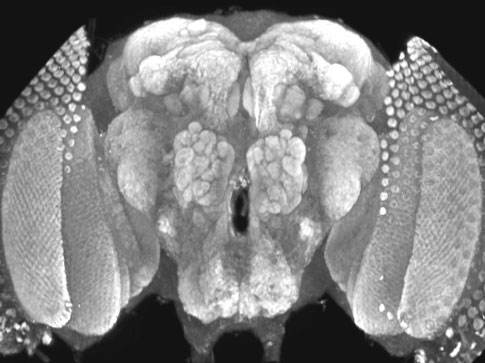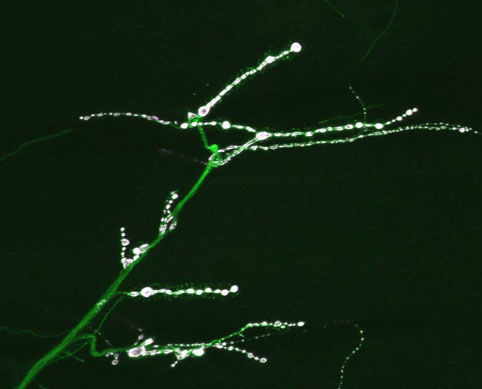|

| |
 Wyan-Ching
Mimi Lee, 2001- Wyan-Ching
Mimi Lee, 2001-
B.S. Biology, 1999 Brown University
Mimi began the lab effort to
generate and characterize fly models of Huntington’s Disease. Huntington’s
disease is an autosomal dominant neurodegenerative disorder caused by expansion
of a polyglutamine tract in the huntingtin protein that results in intracellular
aggregate formation and neurodegeneration. Pathways leading from polyglutamine
tract expansion to disease pathogenesis remain obscure. To elucidate how
polyglutamine expansion causes neuronal dysfunction, Mimi generated
Drosophila transgenic strains expressing human huntingtin cDNAs encoding
pathogenic (Htt-Q128) or nonpathogenic proteins (Htt-Q0). While expression of
Htt-Q0 has no discernible effect on behavior, lifespan or neuronal morphology,
pan-neuronal expression of Htt-Q128 led to progressive loss of motor
coordination, decreased lifespan and time-dependent formation of huntingtin
aggregates specifically in the cytoplasm and neurites. Huntingtin aggregates
sequester other expanded polyglutamine proteins in the cytoplasm and lead to
synaptic aggregate accumulation and disruption of axonal transport. In
contrast, Drosophila expressing an expanded polyglutamine tract alone, or
an expanded polyglutamine tract in the context of the spinocerebellar ataxia
type 3 protein, display only nuclear aggregates and do not disrupt axonal
trafficking. Mimi’s findings indicate that non-nuclear events induced by
cytoplasmic huntingtin aggregation may play a central role in the progressive
neurodegeneration observed in Huntington’s disease.
|




